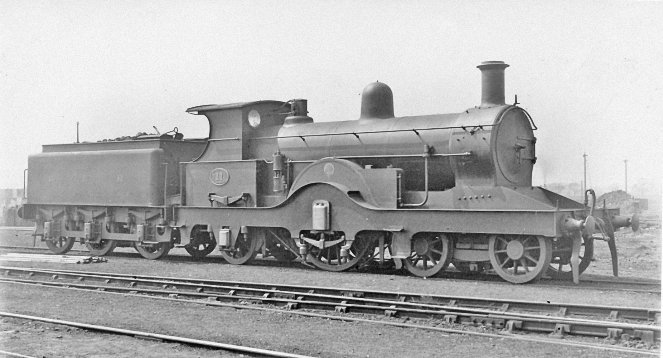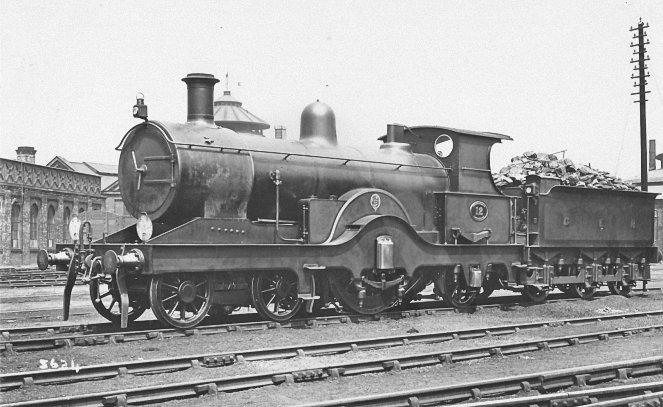P43 Class 4-2-2 1898
1-10
 GERS Collection 7002/64
GERS Collection 7002/64
The 1890s was the decade that saw a resurgence in popularity of the ‘single-driver’ for the lighter and faster trains, due to the invention of steam sanding, and the GER decided to build some more ‘singles’. Shortly after taking over as GER Locomotive Superintendent James Holden had taken on a premium apprentice, one Frederick Vernon Russell. He proved to be a most brilliant pupil, and Holden evidently passed this project to Russell to “see what he was made of”. The 4-2-2 design that was the result was unlike anything previously seen on the GER, being a cross between Dean’s Great Western and Johnson’s Midland Railway designs. Thus, it had double frames for the leading and trailing axle, two-piece cab sides, and a built-up rimmed chimney with polished cap. The driving wheels were a little on the small side for a British ‘single’, being only seven feet in diameter, but the locomotive was generally larger throughout than previous GER express locomotives. Oil firing was fitted, the apparatus incorporating an arrangement for pre-heating the air for combustion by passing it first through an arrangement of heat exchangers in the smokebox. However, the most striking feature was the tender, which was of an unusual rounded shape with an inset coal space – somewhat anticipating British practice by some 45 years. The coal space was of course mostly occupied by a rectangular oil fuel tank holding 715 gallons of oil, the tender otherwise contained 2790 gallons of water. These tenders were known as ‘watercarts’ or ‘Bohemian’ tenders. Ten engines were built as the P43 class, and they were used to good effect on the fast Norwich and Cromer expresses. The photograph shows No. 11 in original condition.
 LPC 3624/GERSHC 7005/22
LPC 3624/GERSHC 7005/22
Two years after their introduction the new, larger Claud Hamilton 4-4-0s appeared for express passenger work, and the P43s were therefore out-classed. In 1901 they were taken off the Norwich line services, converted to coal burning and transferred to the long distance services over the GN&GE Joint Line. Their tenders were equipped with water scoops, which were of no use on their new duties, so they exchanged tenders with the T19 class 2-4-0s Nos. 1020-1029. No. 12 is seen here at York, having worked one of the ‘Cathedrals Route’ expresses from Liverpool Street via Ely and Lincoln. This engine was experimentally fitted with an extended smokebox in 1902. The P43s had a very short life, for they were all withdrawn between 1907 and 1910.
